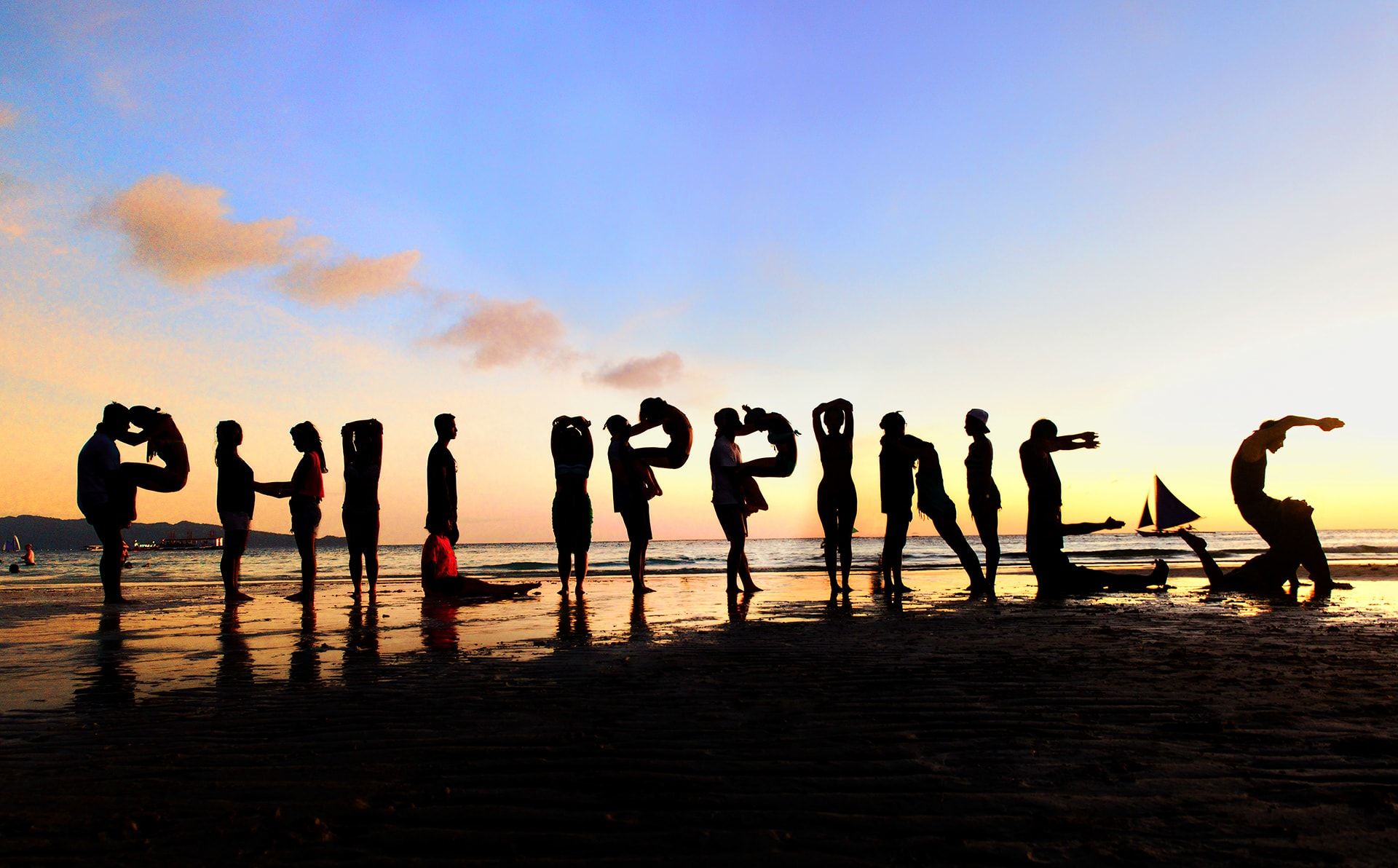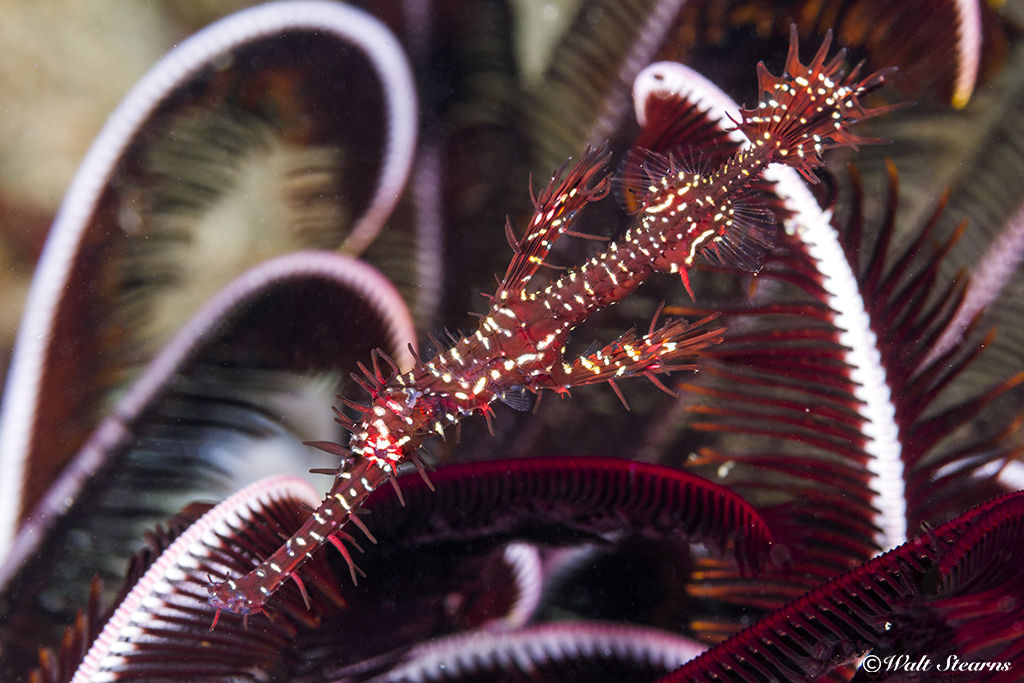
A Three-Island Diving Safari with Added Topside Adventures | By Cameron Akins
There are more than 7,500 islands in the Philippines, stretching nearly 1,000 miles from north to south between the Pacific Ocean and the South China Sea. That makes for a lot of coastlines, and a lot of diving opportunities. Of course, you need more than great reefs for a dive vacation. You need resorts, boats and professional infrastructure. And in the Philippines, you'll find all of these elements in the region known as the Central Visayas, on the islands of Cebu, Bohol and Negros.
For my first trip to the Philippines, I planned a three-stop itinerary that would take in the best of each of these islands, and showcase the diving diversity. Step one was getting there, and that involved flying into the capital city of Manila, then catching a connecting flight to Dumaguete City, on the island of Negros. One thing that I noticed right away was how accommodating everyone was. The Filipino people have a reputation for friendliness and polite warmth, and that was certainly what I experienced during my travels.


A Relaxing Atmosphere
After all the flying and transfers, I was ready for some relaxation. And there was plenty of that at Atmosphere. This boutique resort is one of the most luxurious in the Philippines, with suites and garden apartments tucked into lush landscaping, and a staff that always seems to anticipate your needs. In addition to diving, there's a focus on wellness, and spending some time at the spa was a great way to get ready for the following morning's dive.
As is common in the Philippines, boat dives at Atmosphere are landed on the beach instead of tied to a pier. But this wasn't a problem, as the staff carried all the equipment to the boat, helped me aboard, and assisted with gearing up. Talk about service! The briefing was thorough and we were soon off to hunt critters. Many sites around Dumaguete begin with soft bottoms close to shore, then transition to coral bommies in deeper water. This provides a perfect opportunity to find both muck-dwelling and reef species. And sure enough, within the first few minutes of the dive, we'd found a pair of banded pipefish, a giant frogfish, loads of clownfish, anemone shrimp and mantis shrimp, which included my colorful favorite, the peacock mantis shrimp. My guide Noel was an incredible spotter and even pointed out a sheep nudibranch no bigger than a grain of rice. The surface interval was not your usual rest on the boat. Because we were close to shore, we landed and went to visit the Malatapay Market—still in our swimsuits. This colorful local market sells everything from fruit and vegetables to clothing and tools. The second dive was equally memorable, and then it was back to the resort for lunch and an afternoon of relaxation with oceanfront yoga.
The following day saw us headed to Apo Island Marine Reserve. This green gem lies four miles offshore and is ringed by white sand beaches set within coral-covered slopes and walls. Apo is reputed to be one of the best diving destinations in the Philippines, and from what I saw; it lives up to the hype. The reefs are incredibly healthy and vibrant, and there's something for everyone, with sites that range from calm shallows to dramatic current-washed points, sheer walls, macro sites and a slope that bubbles with geothermal activity. I broke out my fish id book and ended up with a two-page list of new species sightings.

Reefs, Fireflies and Chocolate Hills
Far too soon, it was time to leave the Dumaguete region. But that was OK because we were boarding a ferry for Bohol. This island is known as the eco-adventure capital of the Philippines, and it's also home to the Magic Ocean Dive Resort. With just 15 rooms, this property has an intimate and informal vibe, and there's a great reef right off the beach. Our first boat dive took us to a nearby wall, which was covered in both hard and soft corals. Again, I was amazed at the overall health of the reefs and the abundance of marine life. Equally enjoyable was the excellent water clarity, and water temperatures that stayed around 84 degrees. The resort's dive guides are experts at spotting small critters that I would never have seen on my own, and on dive number two, we bounced down to 75 feet to find pygmy seahorses. With short boat rides, it was easy to be back at the resort in time for lunch, and then head out for a guided shore dive on the house reef at Magic Point. This site offers both sandy bottom and reef, and it is a critter heaven. We saw eels, sea snakes, mantis shrimp and more, and could have spent several days and nights exploring just the area in front of the resort.


But even the most avid diver should plan for a day of topside exploration of Bohol. And that's what we did. We began with a visit to the tarsier sanctuary to see one of the world's smallest primates. These charming tree dwellers are small enough to fit in the palm of your hand, and with their big eyes and swiveling heads, they look a bit like Gizmo from the movie Gremlins. Next up was zip lining, but this was not your usual platform-to-platform canopy tour. We soared Superman style across an entire river valley, then took a cable car back across for a relaxing look at what we had just zipped over. Next, we took a jungle cruise up that same river; enjoy lunch aboard while being serenaded with guitar music. In the afternoon, we toured the Mahogany Forest, which looks like a movie set for a prehistoric thriller. Next up was a trip to Bohol's famous Chocolate Hills. There are thousands of these unique grass-covered geological formations, which really are shaped like Hershey's Kisses—and turn brown in the dryer months. We climbed 208 steps to an observation platform for an amazing view. Due to an afternoon rainstorm, we decided against the ATV tour and the visit to a colony of long-tail macaque monkeys. That night, back at the resort, we witnessed one of Bohol’s other signature attraction, as massive clouds of fireflies made the trees pulse with light.


Big Fish, Little Fish
The third leg of our tour had us boarding another ferry for the island of Cebu, and the small west-coast village of Moalboal. We devoted a full day to the trip, but avid divers could squeeze in a dive or two along the way with a stop at Cabilao Island. Magic Island Dive Resort is an intimate property, with just ten oceanfront rooms clustered around the dive shop, restaurant and pool. We arrived in time for an afternoon massage and dinner by lantern light.


Next morning, we boarded a boat for a ten-minute ride to Pescador Island, where we descended on a pinnacle set against a steep wall. Right away we saw two giant frogfish and a ghost pipefish. The water was teeming with schools of bannerfish, batfish and butterfly fish, plus four really large turtles. The day's second dive took us to Panagsama Beach, site of the region's most famous underwater experience, the sardine run. Moments after entering the water, we were enveloped in a cloud of tiny silver fish. These schools are said to number into the millions, and it was mesmerizing to watch as they zipped back and forth to create ever-changing formations in the mid-day light. We kept to depths of 40 to 60 to view the sardines from below, but they weren't the only show on the reef. We found another ghost pipefish, a scribbled pipefish, white-eyed eels, mantis shrimp and an assorted collection of colorful invertebrates. Later in the day, we made a shore dive on the house reef, and I saw my first pair of mating mandarin fish. One more item to check off the bucket list!
Our Philippines diving adventure ended with a big event. Literally. From Magic Island, we made a day trip to the village of Oslob, which has become world-famous for whale sharks. Just yards from shore, dozens of these huge yet harmless sharks gather for offerings of shrimp provided by local fishermen. This creates a unique opportunity for an almost guaranteed in-water encounter. We had the option diving or snorkeling with the sharks, or doing both. That's what I opted for, and it provided two unique perspectives. On scuba, you can watch them pass overhead, but when you are snorkeling, they often come right up to you. Of the two experiences, I thought the snorkeling was the most thrilling.


A Great Value
I could have happily spent another month diving the Philippines. What I saw on this first visit only whetted my appetite, and there are so many more areas to explore. Between the healthy reefs and the abundance and diversity of marine life, there's no question that the Philippines are a world-class diving and snorkeling destination. The question is, are they a destination that is achievable for the average North American traveler. The answer is yes. You can usually find airfares from North America for $1,000 or less, and package prices for the resorts are on par and sometimes lower than a comparable property in the Caribbean. Shop around a bit, and you can do even better. For example, Magic Island offered a DEMA special that included 7 nights’ accommodations, 3 meals daily, round trip transportation from Cebu airport round-trip, and 5 days of unlimited diving with 3-4 boat dives daily and unlimited shore diving— all for $1,285 per person/double occupancy. A recent price check of flights showed a rate of $750 for a Los Angeles/Cebu round trip, putting the entire package in the $2,000 range. You may pay a bit more, depending on when and where your travels take you, but the point is that the Philippines currently represents one of the best values in dive travel. And there's a lot more than what I was able to describe in this post. Caradonna represents a wide range of locations across the Philippines, and we would love to tell you more about this exciting destination. Drop us a note at sales@caradonna.com or give us a call at 800-330-6611, and let us help plan your adventure.